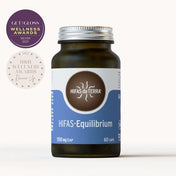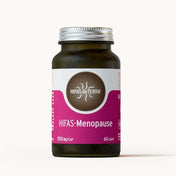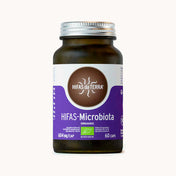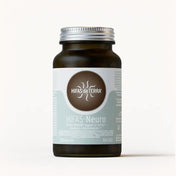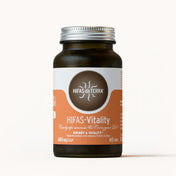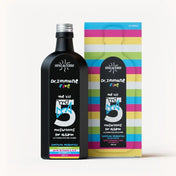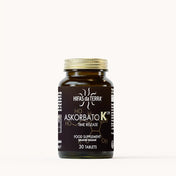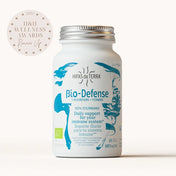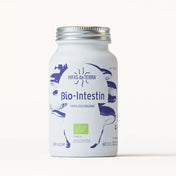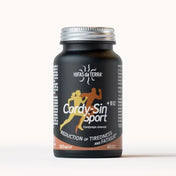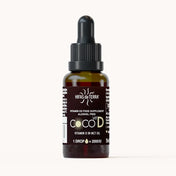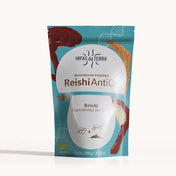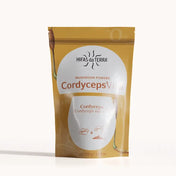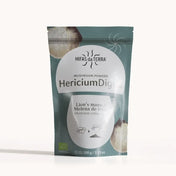Cardiovascular health care should constitute one of the objectives of today's society. Virtually daily we attend the publication of new and discouraging data on the prevalence of obesity (even childish), but also to that of others in which a high number of subjects with high blood pressure and inadequate levels of cholesterol, triglycerides or glucose are evidenced. The conjunction of certain metabolic alterations is known as metabolic syndrome and already constitutes one of the main concerns in public health. Can you reverse the tendency of a syndrome that already affects 25% of the male adult population and more than 16% of the female adult population?
Defining metabolic syndrome (SM)
After several decades of qualification, metabolic syndrome is defined as a variable and frequent cluster of cardiovascular risk factors. Currently, to talk about metabolic SM, at least three of the following five risk factors must be given:
- Abdominal obesity
- High blood pressure
- Plasma glucose levels high
- Plasma levels of high triglycerides
- Reduced plasma levels of HDL
How to act against SM with mycotherapy

Various studies in patients conducted with Reishi (Ganoderma lucidum)Shiitake (Edodes lentinula), Maitake (Frondosa tap), Sun mushroom (agaricus blazei) and thistle mushroom (Pleurotus eryngii) They have already demonstrated act positively in one of the metabolic alterations that involve metabolic syndrome. However, from HDT we have made a selection of the most significant data:
- The fungus Edodes lentinula It is able to prevent fat from fat, reduce levels of triglycerides in plasma and body weight gain. Thus the formation of atheromas in the blood vessels would prevent, acting positively against cardiovascular pathologies.
- The fungus hydrosoluble extract Ganoderma lucidum Reduce triglycerid levels and increase HDL levels.
- Supplementation with Frondosa tap It has demonstrated the inhibition of the maturation of the adipocytes of brown fat.
How to act in front of the SM through the diet: Dietary recommendations to try to correct dyslipremia
When thinking about food and diet we ask ourselves what are the recommendations to follow to act on our cholesterol levels. The question is answered by HDT's medical team and summarize at the following points.
Avoid
- The intake of animal fats, which means not eating pork churrasco, lamb, viscera or sausages. With regard to meat consumption, the consumption of veal, turkey and chicken (without skin) and certain parts of the pig such as the back, the ham and the sirloin will be allowed.
- The consumption of fatty broths. Just consume vegetable or totally misfortunes. To eliminate fat from any prepared broth it is advisable to store it in the fridge and, once it is cold, remove the upper fat layer.
- The consumption of pastry and pastries products, pre -cooked and dried foods of fast cooking such as soups in envelope.
- The consumption of prawns, shrimp and lobsters due to its high cholesterol content. If there is no counter -order, if clams, beroberences and mussels could be consumed.
- The consumption of alcoholic beverages.
- The consumption of fried and battered foods.
Advisable
- Consume skimmed dairy.
- Limit the consumption of weekly yolks to three, maximum.
- Once this first week of start, vegetables, fruits and vegetables have no more limitation for consumption than the one that tells you in your dietary plan. In fact, food fiber plays an important role in dyslipidemias (legumes will be gradually introducing them until we reach a consumption of 3-4 times per week).
- Before a novel food, read the label. If it reads that contains vegetable fats, without specifying the type, avoid its consumption.
- The recommended cooking techniques are: in water, baked, in papillote, steamed and grilled.
Highly recommended
- Consume blue fish 2 to 3 times a week
- Introduce the consumption of mushrooms into the weekly diet, especially Shiitake, Maitake, Sun mushroom and thistle mushroom.
- Both in the kitchen and in the dressings only the use of virgin olive oil is recommended.
How to act against SM with physical exercise
As a favorable aspect to act against metabolic syndrome, to the previous list of dietary recommendations we should add the increase in physical activity. The ideal, as the HDT doctor points out is to program a daily physical activity. Walk, run, practice aerobics or swimming, but also something that we can all do: up and down stairs.
Do you need more arguments? Although it is demonstrated that physical activity plays an important role in cardiovascular health care, we have selected some important data to take into account about the exercise and the clinical response:
- Several studies show that aerobic exercise significantly improves HDL. Also, aerobic exercise demonstrates a significant decrease in size.
- It is shown that physical exercise reduces the incidence of arterial hypertension (HT).
- Comprehensive interventions on life habits that include physical exercise, diet and associated weight loss, have clearly shown their benefit in the prevention of SM and diabetes mellitus (DM).
The data Why is it important to act today and not wait for tomorrow?
- 25 % of the adult world population presents SM, that is, a quarter of the world population presents at least 3 of the 5 metabolic alterations or risk factors mentioned.
- Individuals suffering SM have 3 times more likely to suffer myocardial infarction (heart attack) than healthy individuals.
- People with SM have 2-3 times more likely to suffer from cardiovascular disease (ECV).
- People with SM have 5 times more likely to develop type II diabetes.
- In Spain, the prevalence of the SM differs between men and women, presenting in at least 25 % of men and at least 16 % of women in most of the national territory.
- The prevalence in the southern and west areas (Extremadura and Galicia, for example) double that of the central and northern areas (Castilla and León and the Basque Country). These data are directly related to the mortality rate due to ischemic heart disease.
Bibliographic references:
- Fukushima M1, Ohashi T, Fujiwara and, Sonoyama K, Nakano M. Cholesterol-Lowering Effects of Maitake (Frondosa tap) Fiber, Shiitake (Lentinus edodes) Fiber, and enakitake (Flammulin velutipes) fiber in ration.exp. Biol. Med. (Maywood). 2001 SEP; 226 (8): 758-65.
- Yang H1, Hwang I, Kim S, Hong Ex, Jeung EB. Lentinus Edodes Promotes Fat removed in hypercholesterolemic mice.exp The Med. 2013 Dec; 6 (6): 1409-1413. EPUB 2013 Oct 8.
- Minamino K, Nagasawa and, Ohtsuru M. A Water-Soluble Extract from Frondosa tap, Maitake Mushroom, you say Lipid Droots in Brown Adipocyte Tissue Cells. Journal of Nutritional Science and Vitaminology 2008, 54 (6): 497-500.
- http://secardiologia.es/multimedia/blog/1678-documento-consenso-sindrome-metabolico
- http://secardiologia.es/multimedia/blog/7962-cuanto-no-importa-tu-muevete-dosificacion-del-ejercicio
- http://secardiologia.es/comunicacion/notas-de-prensa/notas-de-prensa-sec/1766-la-prevalencia-del-sindrome-metabolico-en-el-sur-y-oeste-de-espana-duplica-la-de-zonas-del-centro-y-norte
- http://secardiologia.es/comunicacion/notas-de-prensa/notas-de-prensa-sec/3917-31-de-poblacion-adulta-espanola-padece-sindrome-metabolico-

